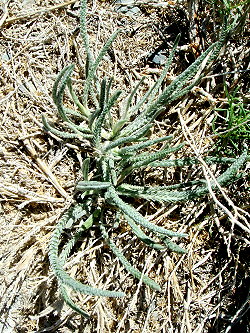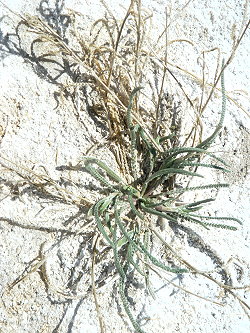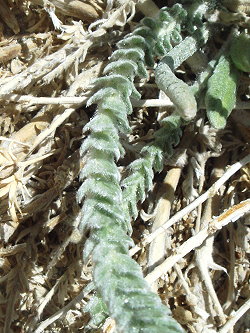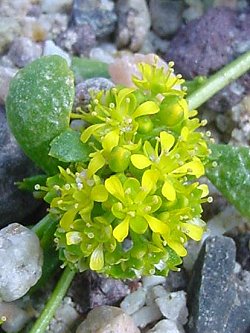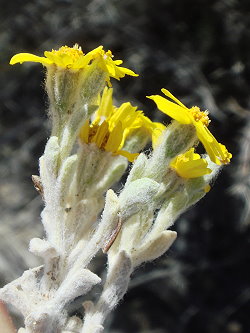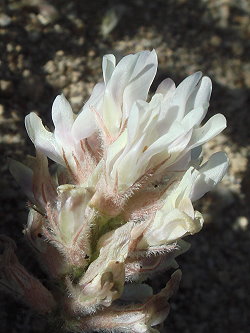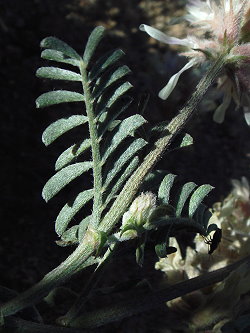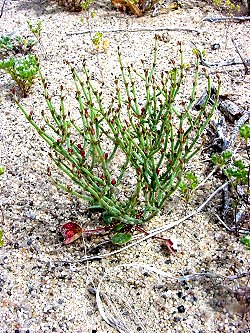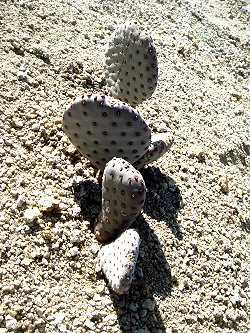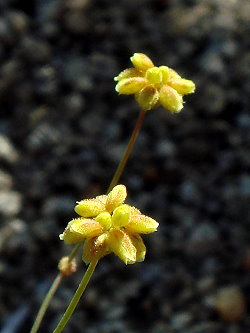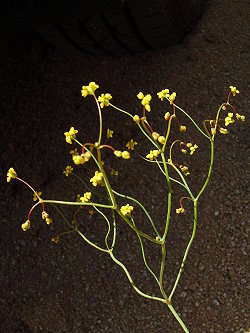| JEPSON WORKSHOP: NORTHERN INYO COUNTY PART ONE APRIL/MAY 2022 PAGE ONE |
| Photographs by Michael Charters |
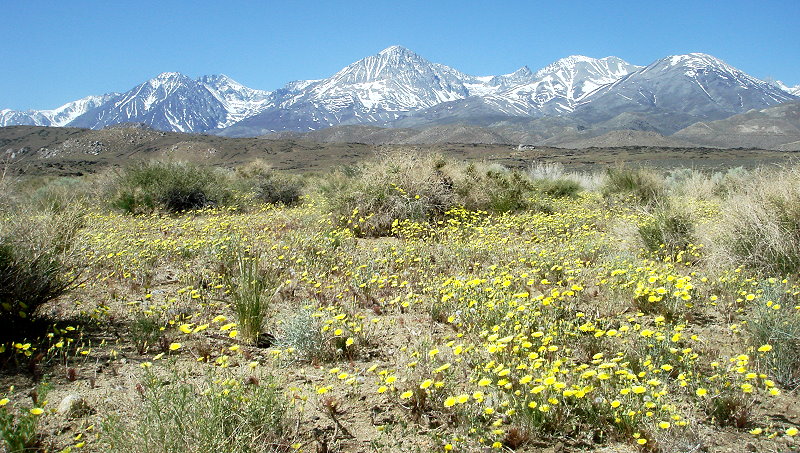 |
The Covid epidemic had kept me cooped up for two years since my excursion to the Amargosa Valley, but in late April I drove up to Bishop in the Owens Valley to participate in my 20th Jepson workshop which was aimed at investigating the flora of a number of areas in northern Inyo County. Our trip leaders were the highly knowledgeable Dana York, former botanist of Death Valley National Park, and Steve Schoenig who has been studying monkeyflowers for the past 35 years and is conducting floristic studies of the northern Death Valley region. This was my sixth workshop with Dana, and he is always one of the best. The photographs in this gallery are from the Friday and Sunday of the workshop, but since one full day (Saturday) was planned to be a long drive to Eureka Dunes which I have visited twice before (see my Eureka Dunes photo gallery), I opted to spend that day with Steve Matson who lives in the area and knows as much about the flora there as anyone, and we spent that day at some locations the workshop was not scheduled to visit. The photographs from that day's outings will appear in Northern Inyo County Part Two. The Bishop area is a wonderful one and I have always loved driving up the 395 through the Owens Valley with the rugged often snow-capped peaks of the Sierras to the west and the softer but nearly as high White and Inyo Mountains to the east. Inyo County is the second largest in California, an area so big that several eastern states together could fit within its borders. With only about 18,000 residents, it is also one of the least populated, and 99% of the land there is designated as public, owned by the National Park Service, BLM, the US Forest Service, China Lake Naval Weapons Station, the Los Angeles Department of Water and Power, and the state of California.The name 'Inyo' has been commonly believed to be a Paiute word meaning "dwelling place of the great spirit," although there is some belief now that it may be a mistranslation of the word "indio," Spanish for 'indian,' which the Paiutes could have heard from other tribes and were using to try to indicate to settlers that this was 'indian' land. The Owens Valley was named for Richard Owens who was a member of John C. Frémont's exploration in 1845. Our destinations for this part of the field trip were primarily into the Buttermilk and Tungsten Hills. The symbol ^ is for a species that was now to me. |
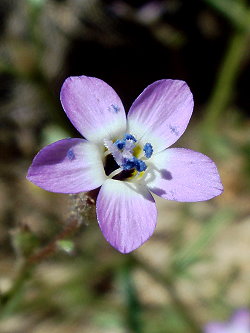 |
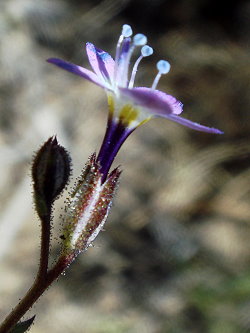 |
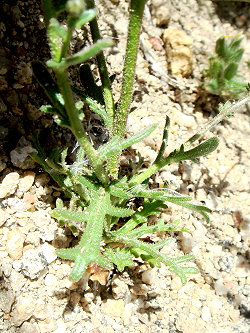 |
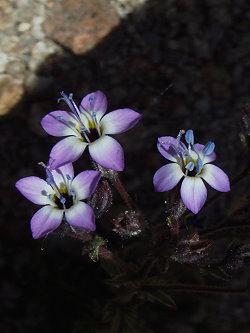 |
|||
| Nevada gilia Gilia brecciarum ssp. brecciarum Polemoniaceae [Named for Filippo Luigi Gilii, 1756-1821] |
||||||
|
|
|
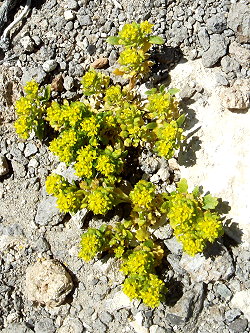 |
|
||
| Yellow peppergrass Lepidium flavum Brassicaceae |
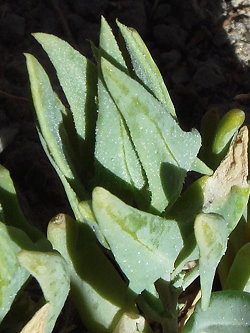 |
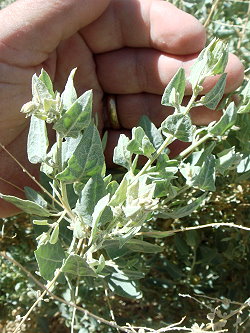 |
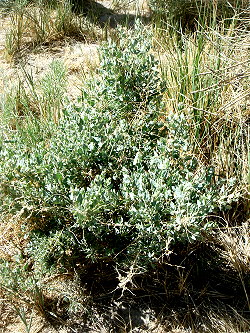 |
||
| Arrowscale Stutzia covillei Chenopodiaceae [Named for Howard Coombs Stutz, 1918-2010, and Frederick Vernon Coville, 1867-1937] |
||||
|
||||
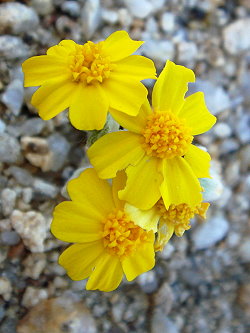 |
|
|
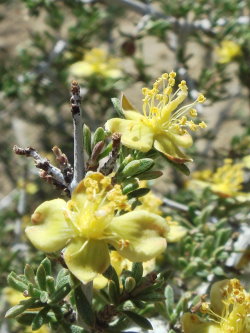 |
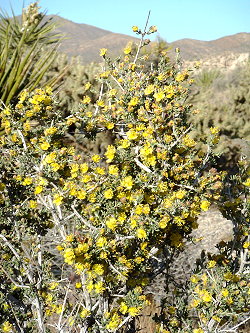 |
|
Blackbrush Coleogyne ramosissima Rosaceae |
||
|
|
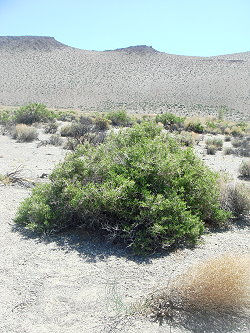 |
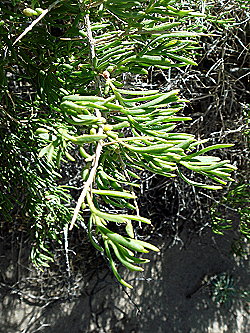 |
|
Black greasewood ^ Sarcobatus vermiculatus Sarcobataceae |
||
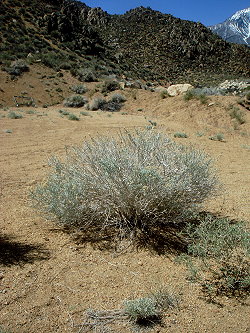 |
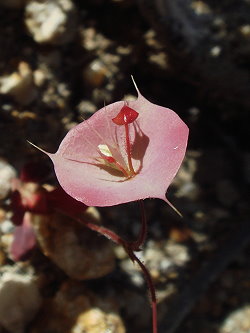 |
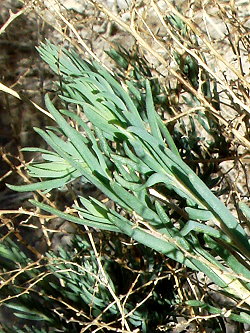 |
||
Rubber rabbitbrush Ericameria nauseosa Asteraceae |
Roundleaf oxytheca Oxytheca perfoliata Polygonaceae |
Rush seepweed Suaeda nigra Chenopodiaceae |
| PHOTO GALLERIES INDEX |
CALFLORA.NET | PAGE TWO OF SIX |
| CALIFORNIA PLANT NAMES: LATIN AND GREEK MEANINGS AND DERIVATIONS | ||
| VIRGINIA PLANT NAMES: LATIN AND GREEK MEANINGS AND DERIVATIONS | ||
Copyright @ 2022 by Michael L. Charters
The photographs contained on these pages may not be reproduced without the express written permission of the author.
Comments and/or questions may be addressed to mmlcharters[at]gmail.com.
